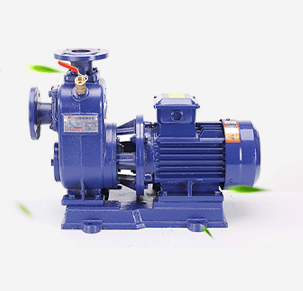Lithuanian
- Afrikaans
- Albanian
- Amharic
- Arabic
- Armenian
- Azerbaijani
- Basque
- Belarusian
- Bengali
- Bosnian
- Bulgarian
- Catalan
- Cebuano
- Corsican
- Croatian
- Czech
- Danish
- Dutch
- English
- Esperanto
- Estonian
- Finnish
- French
- Frisian
- Galician
- Georgian
- German
- Greek
- Gujarati
- Haitian Creole
- hausa
- hawaiian
- Hebrew
- Hindi
- Miao
- Hungarian
- Icelandic
- igbo
- Indonesian
- irish
- Italian
- Japanese
- Javanese
- Kannada
- kazakh
- Khmer
- Rwandese
- Korean
- Kurdish
- Kyrgyz
- Lao
- Latin
- Latvian
- Lithuanian
- Luxembourgish
- Macedonian
- Malgashi
- Malay
- Malayalam
- Maltese
- Maori
- Marathi
- Mongolian
- Myanmar
- Nepali
- Norwegian
- Norwegian
- Occitan
- Pashto
- Persian
- Polish
- Portuguese
- Punjabi
- Romanian
- Russian
- Samoan
- Scottish Gaelic
- Serbian
- Sesotho
- Shona
- Sindhi
- Sinhala
- Slovak
- Slovenian
- Somali
- Spanish
- Sundanese
- Swahili
- Swedish
- Tagalog
- Tajik
- Tamil
- Tatar
- Telugu
- Thai
- Turkish
- Turkmen
- Ukrainian
- Urdu
- Uighur
- Uzbek
- Vietnamese
- Welsh
- Bantu
- Yiddish
- Yoruba
- Zulu
Telephone: +86 13120555503
Email: frank@cypump.com
Gru . 07, 2024 08:38 Back to list
slurry pump seal
Understanding Slurry Pump Seals A Key Component in Pump Performance
Slurry pumps are essential in industries that deal with the transport of fluid mixtures containing solid particles. These pumps are widely used in mining, mineral processing, wastewater treatment, and many other applications where abrasive slurries need to be moved efficiently. One crucial aspect of slurry pump operation is the sealing system, which plays a significant role in ensuring the pump's efficiency and longevity. In this article, we will delve into the importance of slurry pump seals, their types, and maintenance strategies to optimize performance.
The Importance of Seals in Slurry Pumps
Seals in slurry pumps serve two primary functions preventing leakage of the pumped slurry and protecting the pump’s internal components from the abrasive nature of the materials being handled. Slurry is often corrosive and can cause wear and tear on mechanical components. Proper sealing is vital to minimize maintenance costs, reduce downtime, and enhance the operational efficiency of pumps.
Types of Seals Used in Slurry Pumps
1. Mechanical Seals These are commonly used in slurry pumps due to their reliability and effectiveness in preventing leaks. A mechanical seal consists of two main parts the stationary and the rotating components. The interaction between the seal faces creates a hermetic seal that can withstand high pressures and extreme conditions. Proper installation and alignment are critical for the performance of mechanical seals.
2. Packing Seals Packing seals are made of woven fibers, often impregnated with a lubricant, and are used in various pumping applications, including slurry pumps. They work by compressing the packing material against the shaft, thus creating a barrier to prevent leakage. Although packing seals can be easier to install and replace, they require regular maintenance, as the packing material may wear out and require adjustments or replacement over time.
3. Lip Seals These seals are often utilized in less demanding applications within a slurry pump. They consist of an elastomeric material with a lip that creates a seal against the shaft. While they can provide an effective barrier against some slurries, they may not be suitable for extremely abrasive or corrosive materials.
slurry pump seal

Maintenance Strategies for Optimal Seal Performance
Maintaining the integrity of seals is essential to the overall performance of slurry pumps. Here are some maintenance strategies to consider
- Regular Inspections Conducting routine inspections of seals can help identify wear and tear before they lead to significant leaks. Look for signs of fluid loss or abrasive material around the seal area.
- Proper Lubrication For packing seals, ensure that the packing is adequately lubricated to reduce friction and wear. Mechanical seals may require specific lubricants as well, depending on the materials used.
- Temperature and Pressure Monitoring Operating a slurry pump outside of its recommended temperature and pressure ranges can lead to seal failure. Regular monitoring can help to prevent conditions that may compromise seal integrity.
- Replacement of Worn Seals It is essential to replace seals that show signs of wear or damage promptly. Delaying this can lead to larger issues, including pump failure, which can be costly in terms of both repairs and downtime.
Conclusion
Slurry pump seals play a vital role in the overall performance and reliability of pumping systems dealing with abrasive and corrosive materials. Understanding the types of seals available, along with implementing a routine maintenance strategy, can significantly enhance the efficiency and lifespan of slurry pumps. By taking proactive measures to maintain seal integrity, industries can reduce costs and ensure smooth operations in their fluid transport processes.
-
Heavy-Duty Mining Sludge Pumps - Wear-Resistant Slurry Handling
NewsAug.02,2025
-
Horizontal Split Case Pump with GPT-4 Turbo | High Efficiency
NewsAug.01,2025
-
ISG Series Pipeline Pump - Chi Yuan Pumps | High Efficiency, Durable Design
NewsAug.01,2025
-
Advanced Flue Gas Desulfurization Pump with GPT-4 Turbo | Durable & Efficient
NewsJul.31,2025
-
ISG Series Vertical Pipeline Pump - Chi Yuan Pumps | Advanced Hydraulic Design&Durable Construction
NewsJul.31,2025
-
ISG Series Vertical Pipeline Pump - Chi Yuan Pumps | Energy Efficient & Low Noise
NewsJul.31,2025










